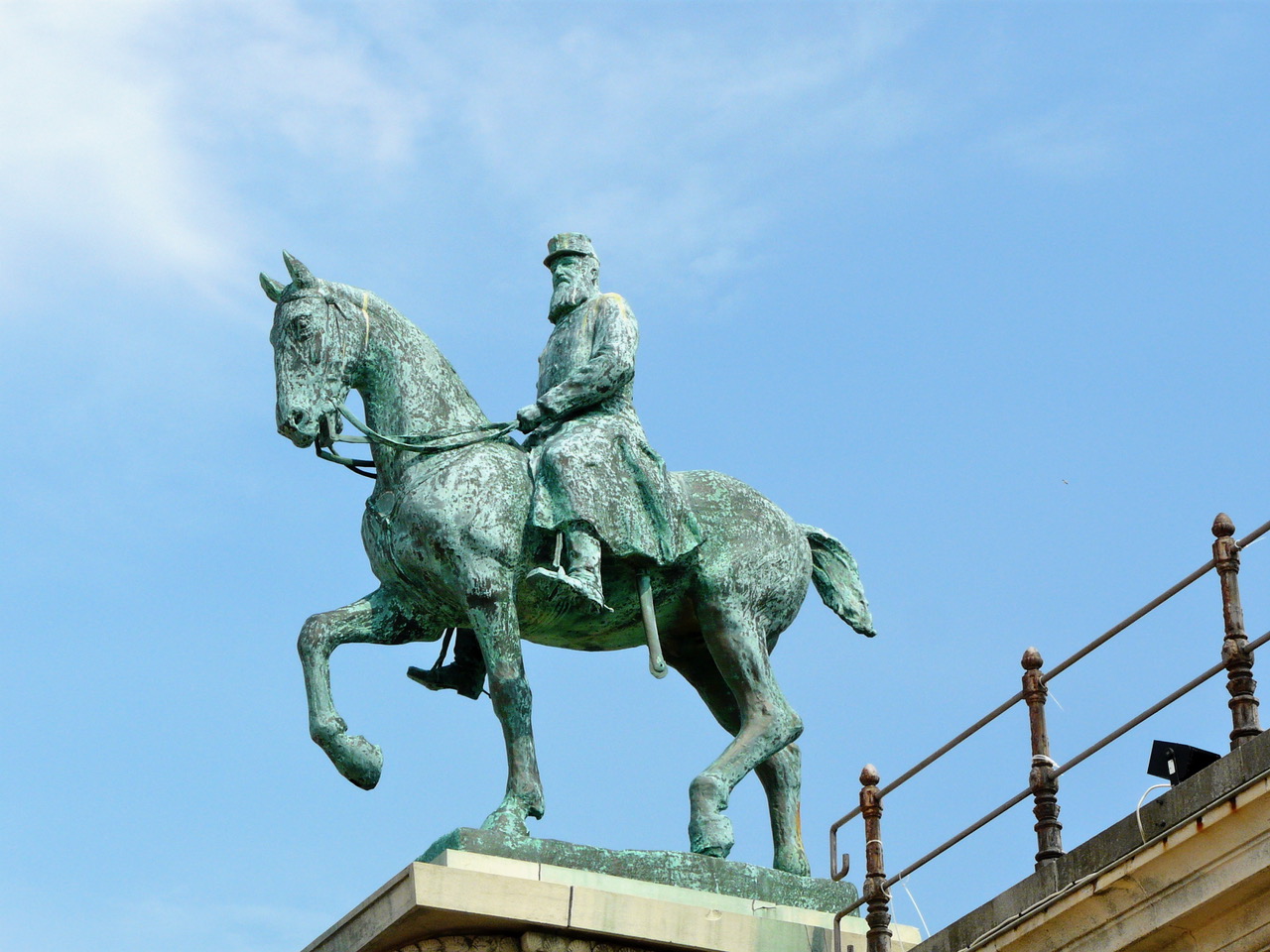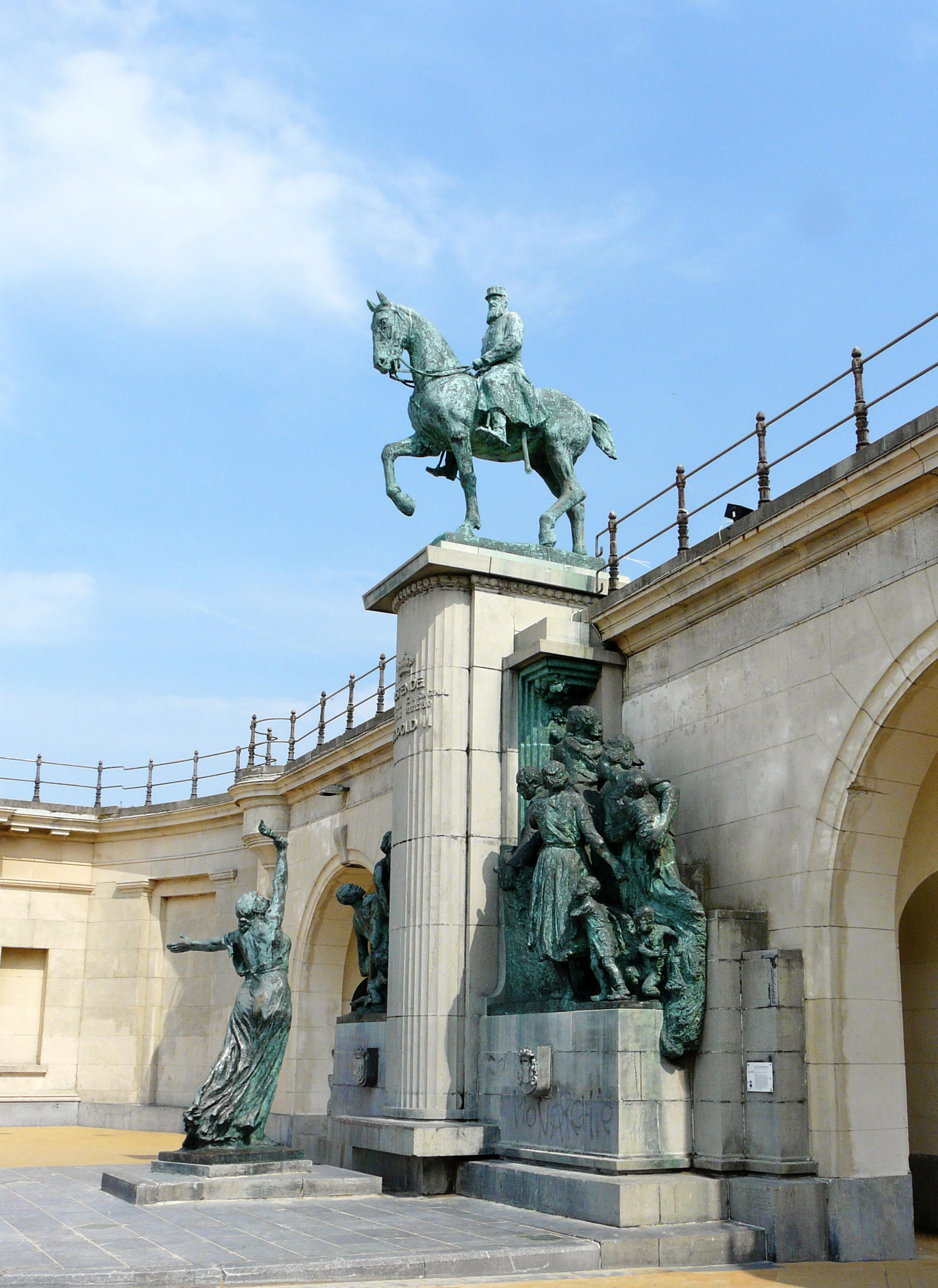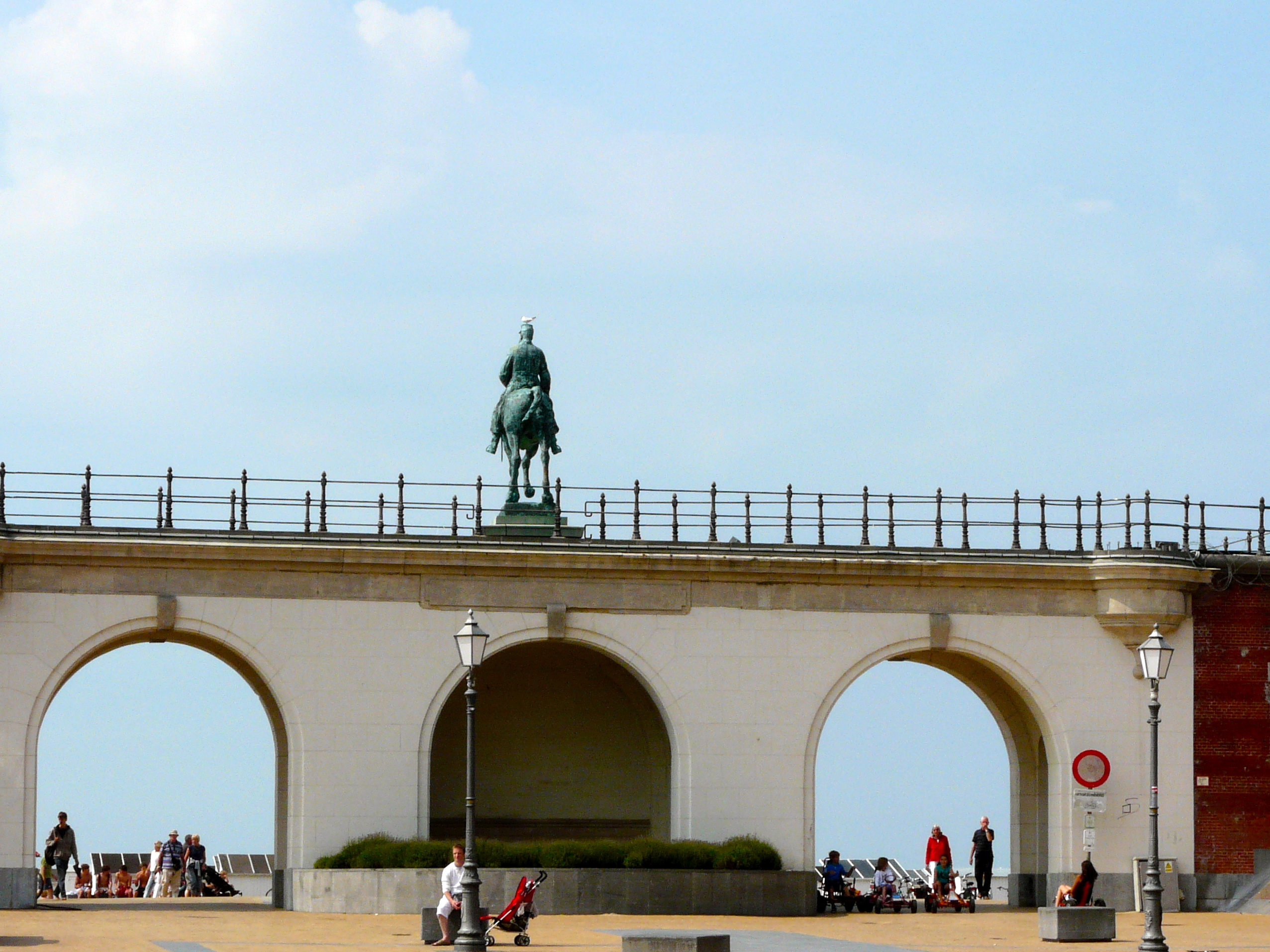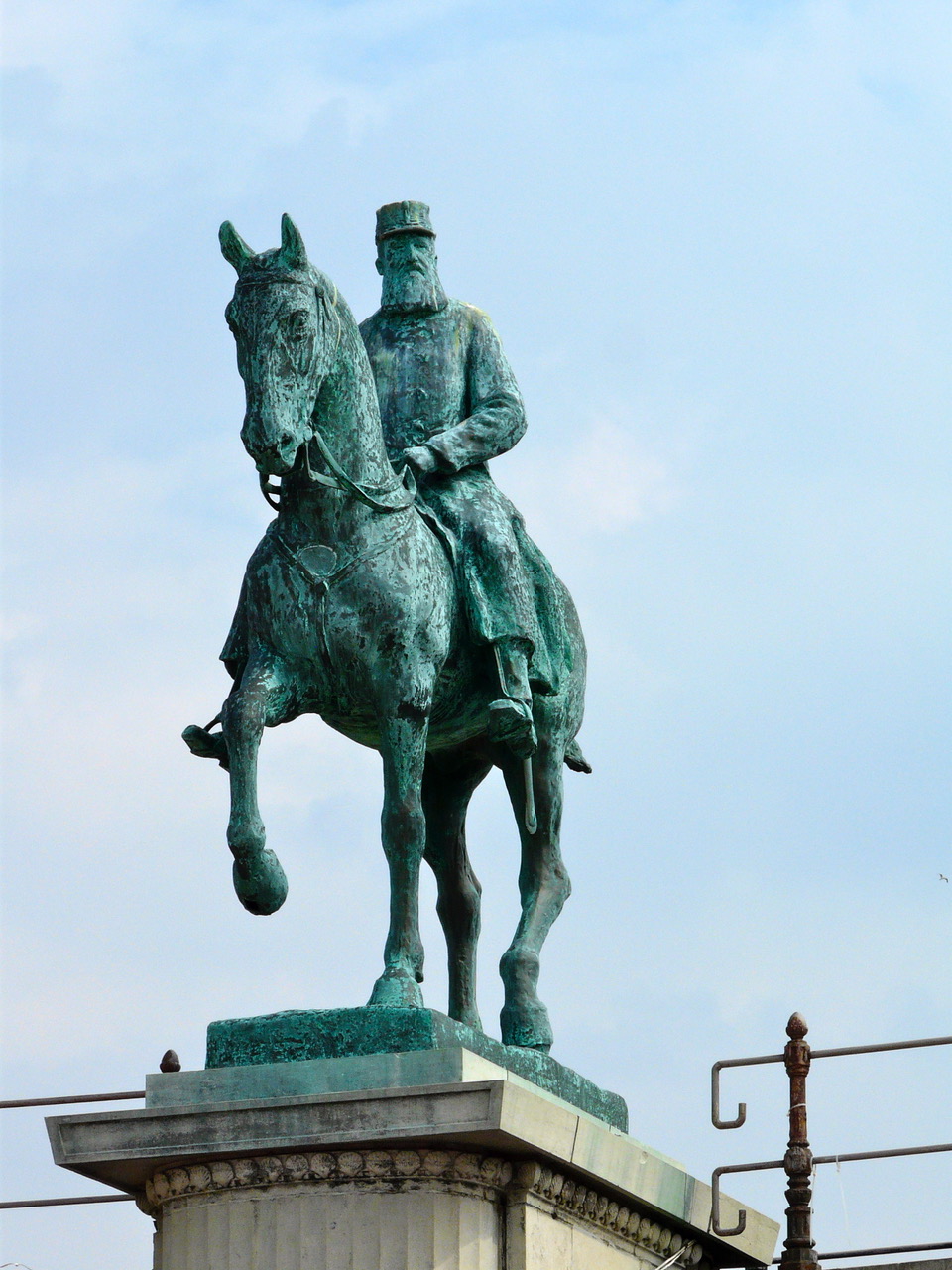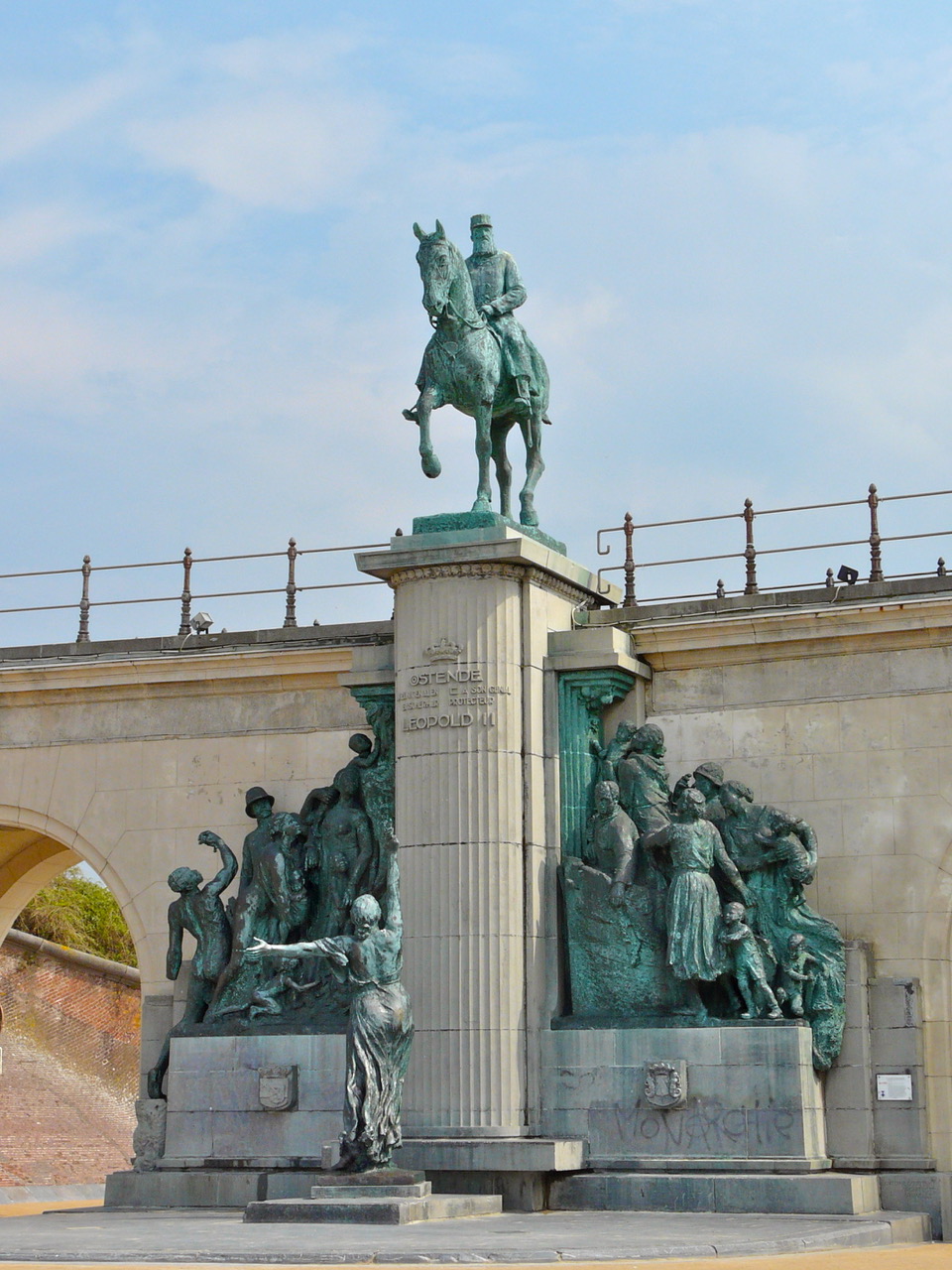- CountryBelgium
- Town:Ostend
-
Year of creation:1931
- Rider(s):Leopold ll
At the Berlin Conference of 1884–1885, the Congo was attributed solely to Leopold II (1835-1909) of Belgium on the condition that he should improve the lives of the native inhabitants. From the beginning, however, Leopold ignored these conditions. He ran the Congo using the mercenary Force Publique for his personal gain and extracted a fortune from the Congo, initially by the collection of ivory, and after a rise in the price of rubber in the 1890s, by forced labor from the natives to harvest and process rubber. His regime was responsible for the deaths of an estimated 2 to 15 million Congolese. He used great sums of the money from this exploitation for public and private construction projects in Belgium. Under considerable international pressure power was transferred to Belgium in 1908.
- Sculptor(s):Courtens, Alfred
(1889 – 1967) sculpted not only the equestrian statue but also two groups of statues.
-
The two groups represent the ‘grateful Congolese people’ because Leopold II had ‘liberated them from the slavery by the Arabs’ and the other group representing ‘the hommage by the Ostend fishermen to its brilliant protector’. Given the reputation of Leopold II, the statue is quite controversial. In 2004 one of the hands of a Congolese was cut off, to surface in 2019 with the promise to return the hand as soon as the Belgian Royal Family should excuse for their behaviour during the colonial past.
